The Canadian Rockies stand as one of North America’s most spectacular mountain ranges, offering visitors an unparalleled combination of pristine wilderness, turquoise lakes, and towering peaks that seem to touch the sky. Whether you’re seeking heart-pumping adventures or peaceful moments in nature, this comprehensive guide will help you plan the perfect Canadian Rockies experience for 2025.
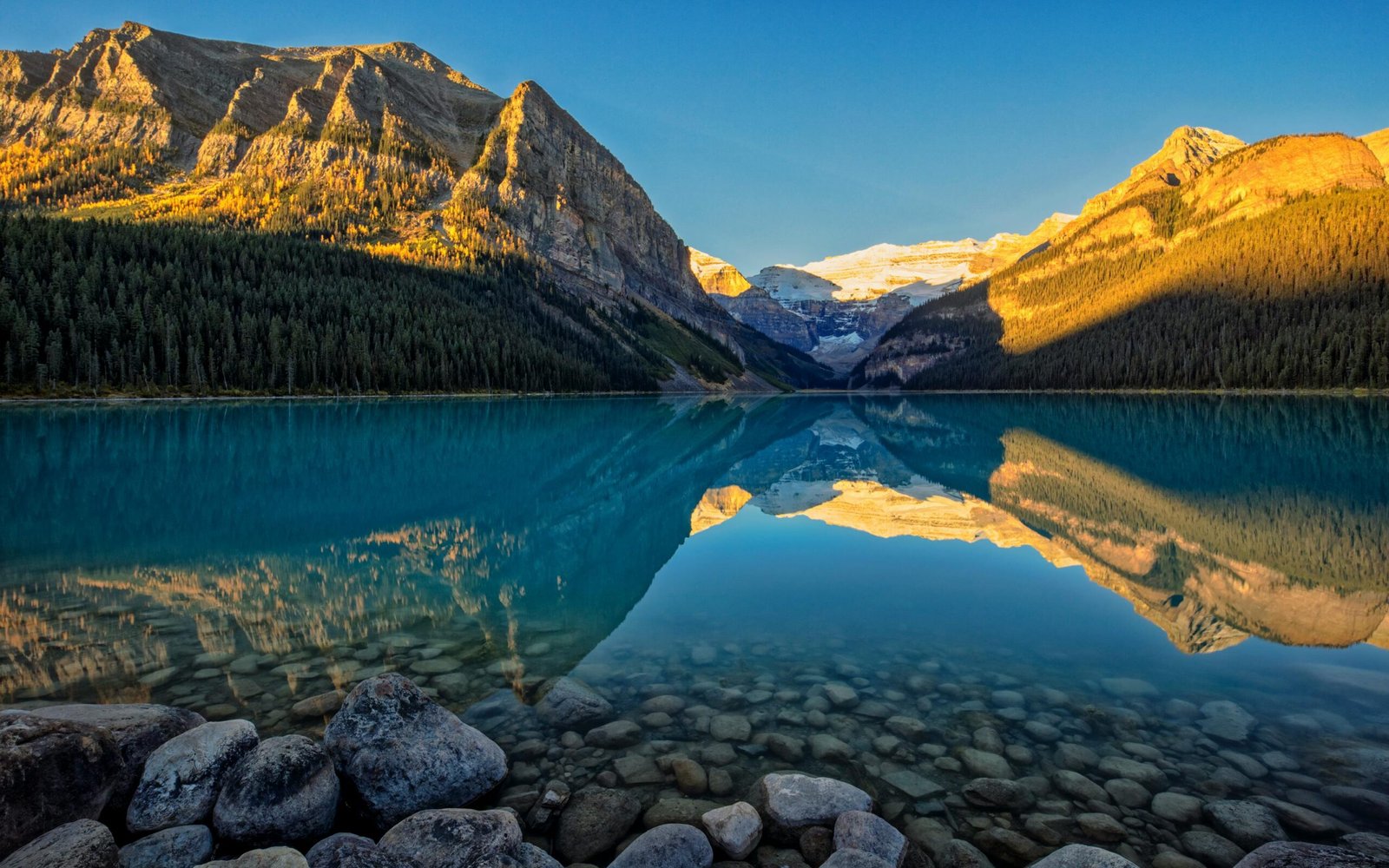
Why the Canadian Rockies Should Be Your Next Adventure Destination
The Canadian Rockies stretch across Alberta and British Columbia, encompassing some of the world’s most photographed landscapes. From the iconic Lake Louise to the dramatic Icefields Parkway, this region offers experiences that will leave you breathless – literally and figuratively. The area attracts over four million visitors annually, yet still maintains its wild, untamed character.
What makes the Canadian Rockies truly special is their accessibility combined with genuine wilderness. You can enjoy a luxury spa treatment in the morning and spot grizzly bears in the afternoon. The region offers world-class hiking, wildlife viewing, scenic drives, and outdoor activities that cater to every skill level and interest.
The best time to visit depends on your priorities. Summer (June-August) provides the warmest weather and best hiking conditions, while winter transforms the region into a snow-covered wonderland perfect for skiing and ice walks. Spring and fall offer fewer crowds and unique seasonal beauty, though some high-altitude activities may be limited.
Essential Planning for Your Canadian Rockies Journey
Getting There and Around
Most international visitors fly into Calgary International Airport, which sits about 90 minutes from Banff National Park. Vancouver International Airport serves as another entry point, particularly for those combining the Rockies with coastal British Columbia. Both airports offer excellent car rental facilities, which you’ll definitely need for exploring the region.
Driving remains the best way to experience the Canadian Rockies. The freedom to stop at scenic viewpoints, wildlife sightings, and hidden gems makes a rental car essential. However, book early – demand for vehicles peaks during summer months, and prices can skyrocket without advance planning.
Public transportation exists but is limited. Brewster Express offers coach services between Calgary and major Rocky Mountain destinations, while some hotels provide shuttle services. For accommodation bookings and transportation comparisons, platforms like Expedia and Hotels offer comprehensive options with competitive pricing.
When to Visit for Maximum Impact
Summer delivers the classic Canadian Rockies experience with warm days, accessible hiking trails, and vibrant wildflowers. Expect crowds at popular destinations like Lake Louise and Moraine Lake, especially during July and August. Book accommodations well in advance – many hotels fill up months ahead.
Winter transforms the landscape into a magical wonderland. Activities shift to skiing, snowshoeing, ice walks, and northern lights viewing. Temperatures can drop below -30°C (-22°F), but proper preparation rewards visitors with otherworldly beauty and fewer crowds.
Shoulder seasons offer compelling advantages. May and September provide pleasant weather with reduced crowds and better accommodation availability. Fall brings spectacular autumn colors, while spring offers the chance to see wildlife emerging from winter hibernation.
Budget Planning and Money-Saving Tips
The Canadian Rockies can strain budgets, but smart planning helps control costs. Accommodation represents the largest expense, with luxury hotels charging premium rates year-round. Consider staying in nearby towns like Canmore instead of Banff townsite for significant savings without sacrificing convenience.
National park passes are mandatory and worth purchasing the annual Discovery Pass if visiting for more than seven days. The pass covers all Canadian national parks and historic sites, providing excellent value for extended trips.
Food costs add up quickly in tourist areas. Stock up on groceries in Calgary before entering the mountains, and take advantage of hotel rooms with kitchenettes. Many trails offer perfect picnic spots with million-dollar views at no extra cost.
Must-See Destinations and Hidden Gems
Banff National Park: The Crown Jewel
Banff National Park serves as most visitors’ introduction to the Canadian Rockies, and for good reason. Lake Louise, with its stunning turquoise waters and Victorian château backdrop, ranks among the world’s most photographed lakes. Visit early morning or late evening to avoid crowds and capture the best lighting.
Moraine Lake offers equally spectacular beauty in a more intimate setting. The lake typically opens in June after ice melt, with peak beauty occurring in late summer when glacial flour creates the famous turquoise color. The short but steep trail to the rock pile viewpoint provides the classic postcard perspective.

Banff townsite balances mountain charm with modern amenities. Stroll Banff Avenue for shopping and dining, relax in the Banff Upper Hot Springs, or take the Banff Gondola for panoramic mountain views. The town serves as an excellent base for day trips throughout the region.
Don’t miss the Johnston Canyon walk, featuring accessible catwalks leading to spectacular waterfalls. The lower falls require about 20 minutes of easy walking, while the upper falls add another 30 minutes of moderate hiking. Winter transforms the frozen waterfalls into ice climbing destinations.
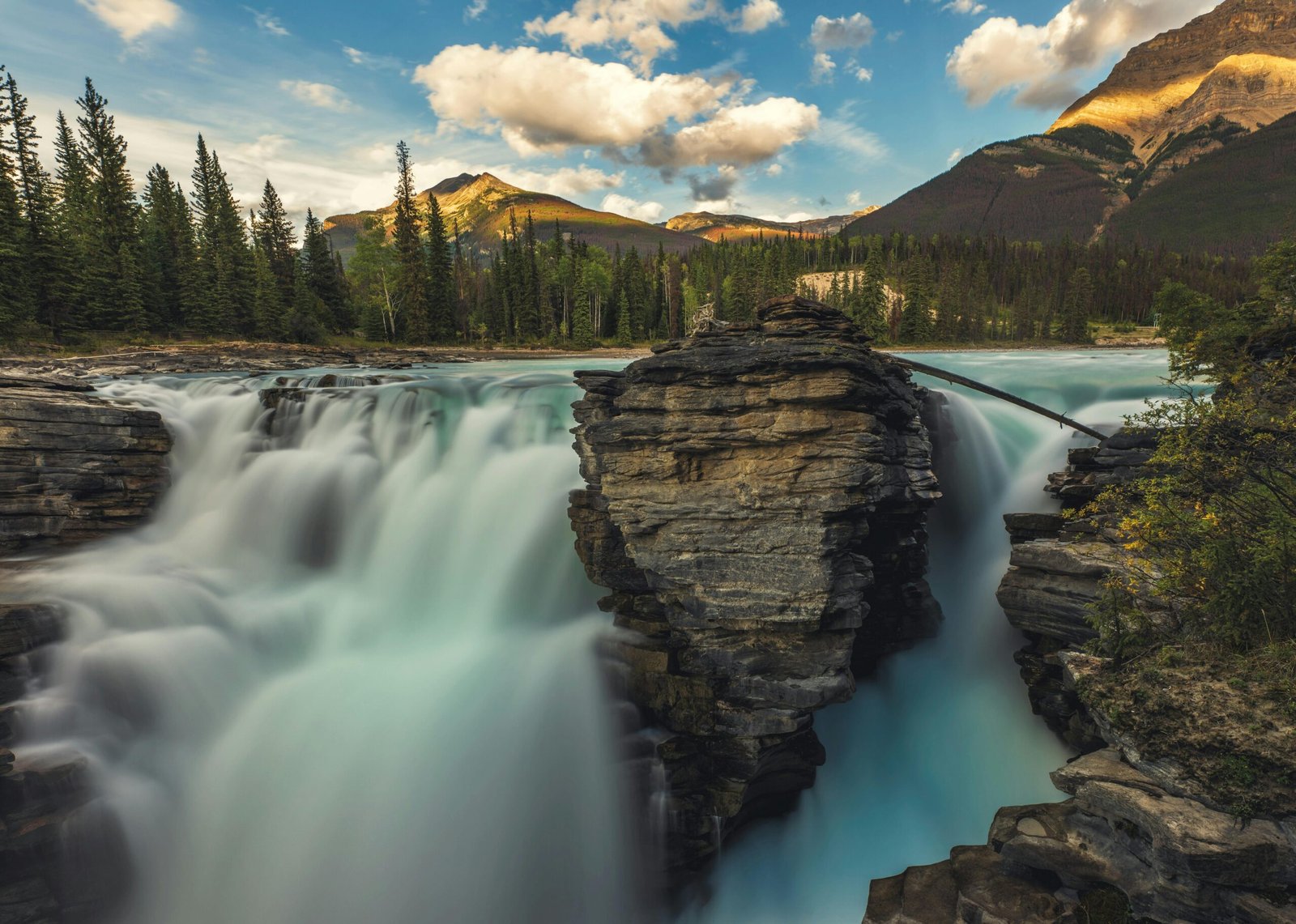
Jasper National Park: Wilderness Unleashed
Jasper National Park offers a wilder, less crowded alternative to Banff while maintaining equally stunning scenery. The park covers more area than Banff and feels more remote, making it perfect for visitors seeking authentic wilderness experiences.
Maligne Lake, the largest natural lake in the Canadian Rockies, stretches over 22 kilometers through pristine wilderness. Boat tours to Spirit Island provide access to one of the most iconic viewpoints in the Rockies, while the lake’s far reaches offer excellent fishing and backcountry opportunities.
The Jasper SkyTram whisks visitors 1,000 meters up Whistlers Mountain for incredible 360-degree views. On clear days, you can see Mount Robson, the highest peak in the Canadian Rockies. The upper station features hiking trails for those wanting to explore further.
Athabasca Falls demonstrates the raw power of mountain water as the Athabasca River forces through a narrow gorge. Multiple viewpoints and a network of short trails provide various perspectives of this natural spectacle. The falls are particularly impressive during spring runoff.
Icefields Parkway: The World’s Most Beautiful Drive
The Icefields Parkway connects Banff and Jasper national parks via 232 kilometers of arguably the world’s most scenic highway. Budget a full day for this drive, allowing time for numerous stops and photo opportunities along the way.
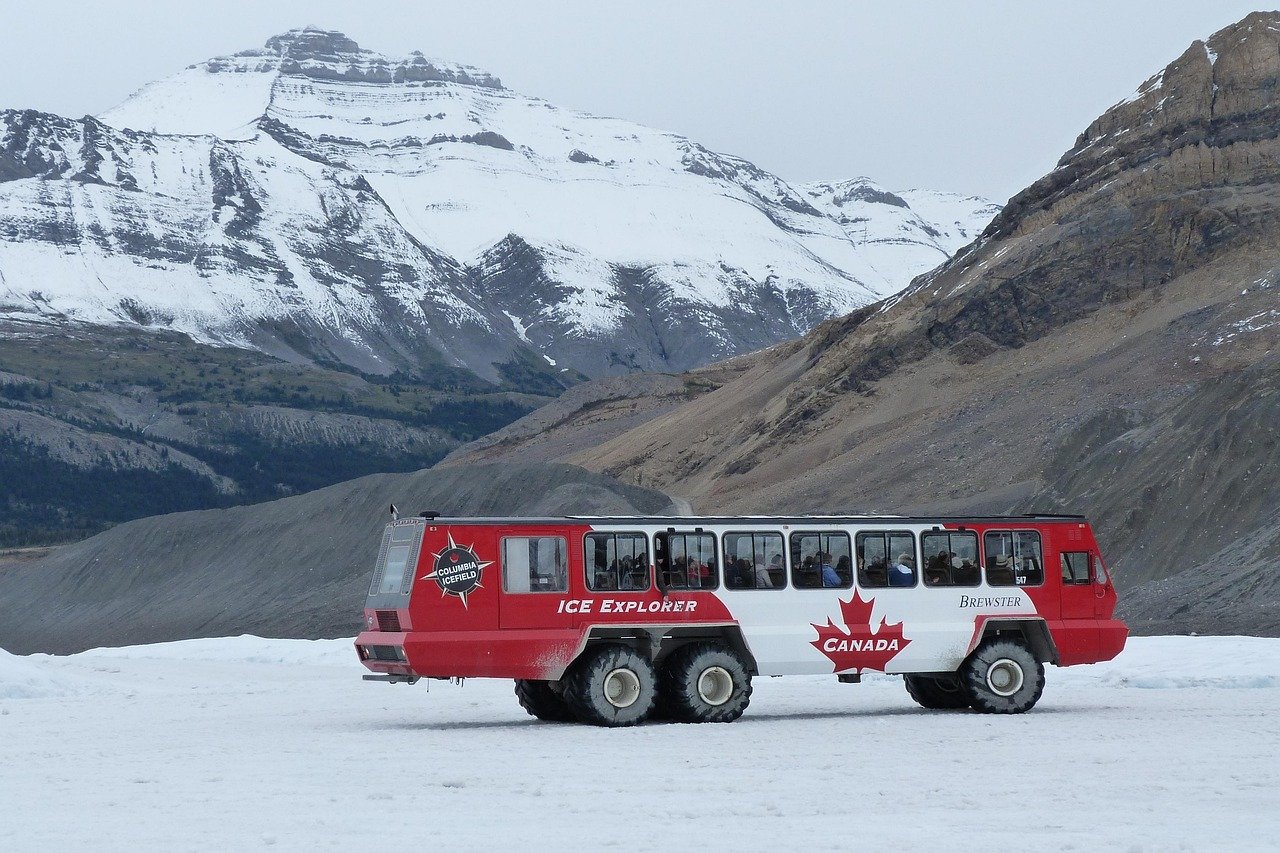
The Columbia Icefield represents one of the largest ice masses in the Rocky Mountains. Glacier tours aboard specially designed Ice Explorers provide the unique opportunity to walk on a 400-year-old glacier. The new Glacier Skywalk extends over the Sunwapta Valley, offering thrilling views for those comfortable with heights.
Peyto Lake viewpoint delivers one of the most Instagram-worthy perspectives in the Rockies. The lake’s distinctive wolf-head shape and brilliant blue color create perfect photo opportunities. Visit during late summer for the most vibrant colors when glacial flour is at its peak concentration.
Bow Lake and Crowfoot Glacier showcase the dynamic relationship between ice and water in the high alpine environment. The easily accessible shoreline provides excellent picnic spots and photography opportunities, while the surrounding peaks create a dramatic backdrop.
Adventure Activities for Every Thrill Level
Hiking Trails That Define the Experience
The Canadian Rockies offer hiking opportunities ranging from gentle lakeside strolls to challenging multi-day backcountry adventures. Proper preparation ensures safe and enjoyable experiences regardless of your chosen difficulty level.
The Plain of Six Glaciers trail from Lake Louise provides a moderate 10.5-kilometer round trip hike leading to a historic tea house with incredible glacier views. The trail gradually gains elevation through diverse terrain, offering spectacular mountain scenery throughout the journey.
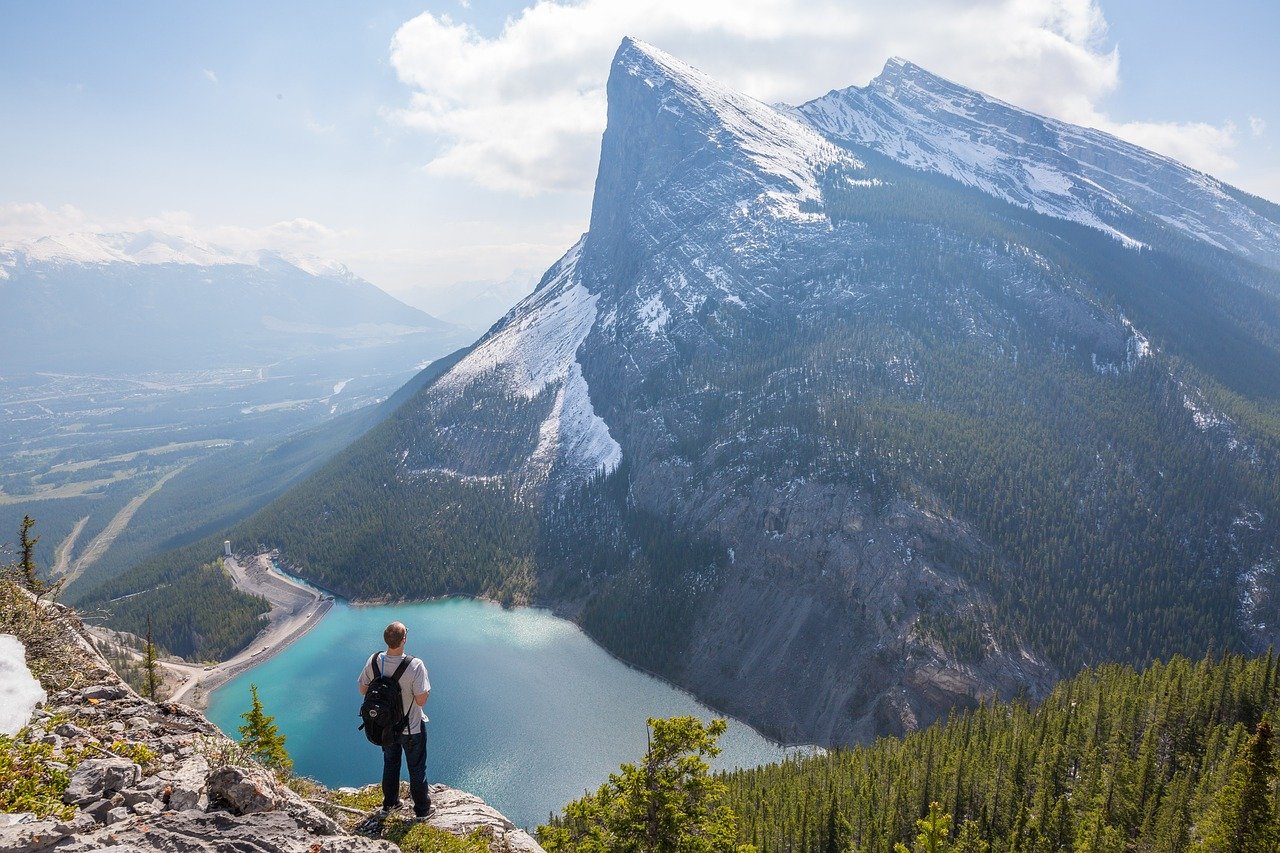
For a more challenging adventure, tackle Mount Temple via the standard route. This 3,544-meter peak requires mountaineering skills and proper equipment but rewards climbers with incredible summit views. Always check conditions and consider hiring a guide for technical peaks.
The Valley of the Five Lakes near Jasper offers an easier but equally rewarding experience. This 4.5-kilometer loop showcases five distinctly colored lakes created by varying mineral content and depths. The trail provides excellent wildlife viewing opportunities and works well for families.
Skyline Trail in Jasper represents one of Canada’s premier multi-day hiking experiences. This 44-kilometer backcountry route traverses high alpine meadows and ridges, providing three days of incredible mountain scenery. Advance reservations are essential for backcountry camping.
Wildlife Viewing Opportunities
The Canadian Rockies support diverse wildlife populations, offering visitors excellent chances to observe animals in their natural habitat. Early morning and evening provide the best viewing opportunities when animals are most active.
Black bears and grizzly bears inhabit the region, with spring and fall offering the best viewing opportunities. Bears emerge from hibernation hungry in spring, making them more visible as they forage. Always maintain safe distances and carry bear spray when hiking.
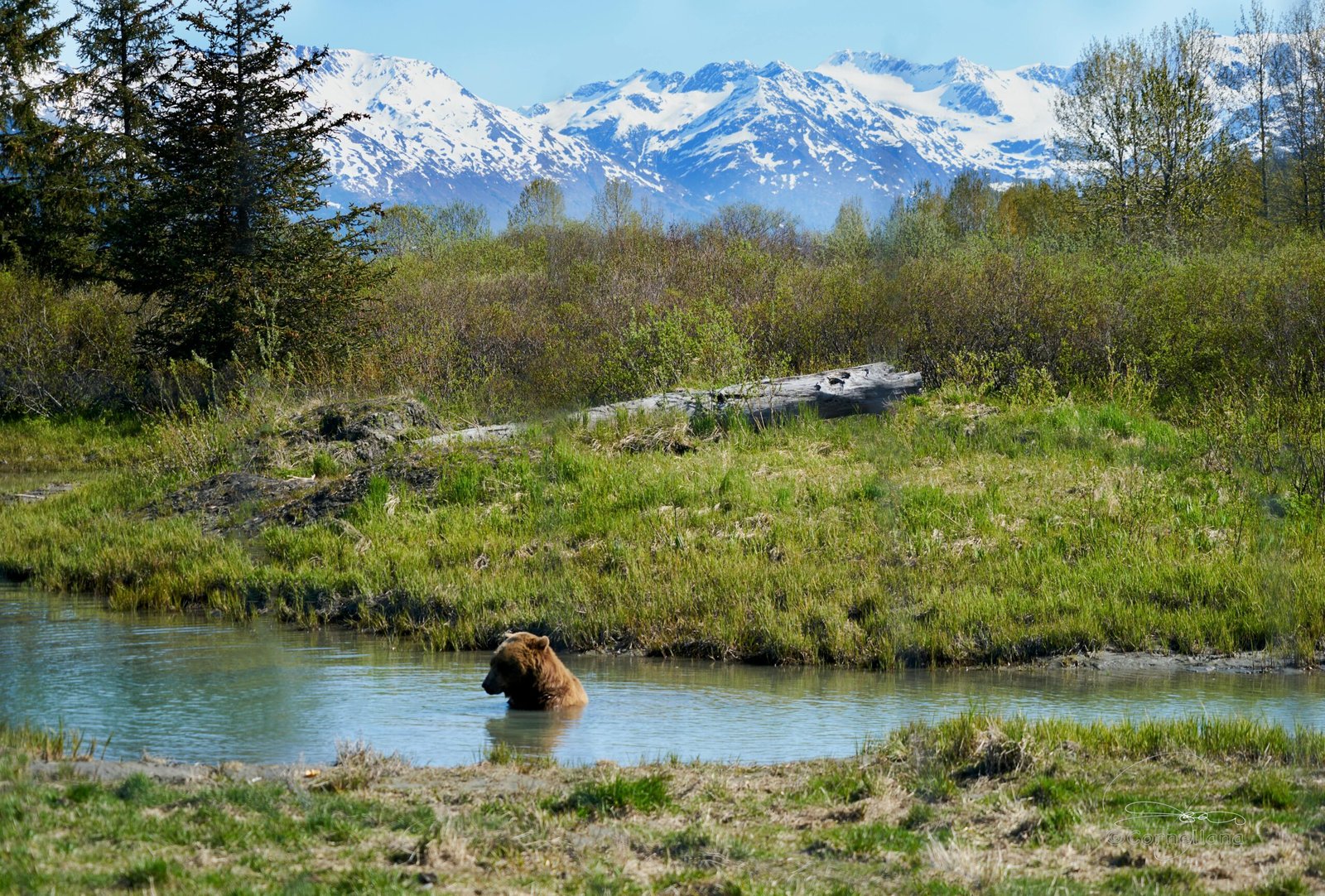
Mountain goats and bighorn sheep frequent high alpine areas and road corridors. The area around the Icefields Parkway often provides excellent sheep viewing, while mountain goats prefer the steep cliffs and rocky terrain of higher elevations.
Elk are commonly seen in and around Banff townsite, particularly during fall rutting season. These impressive animals can become aggressive during mating season, so maintain respectful distances and never approach for photos.
Winter Adventures and Snow Sports
Winter transforms the Canadian Rockies into a completely different destination, offering unique activities impossible during warmer months. Proper clothing and preparation become even more critical in cold conditions.
Skiing and snowboarding enthusiasts will find world-class resorts throughout the region. Lake Louise Ski Resort offers spectacular mountain views alongside excellent terrain for all skill levels. Sunshine Village provides reliable snow conditions and some of Canada’s longest seasons.
Ice walks through frozen canyons provide magical winter experiences. Johnston Canyon and Maligne Canyon offer guided ice walk tours, allowing visitors to safely explore areas transformed by winter’s freeze. Specialized ice cleats and warm clothing are essential for these adventures.
Cross-country skiing and snowshoeing open up vast areas of winter wilderness. Many summer hiking trails become excellent winter routes for those with appropriate skills and equipment. Guided tours help newcomers learn techniques while exploring safely.
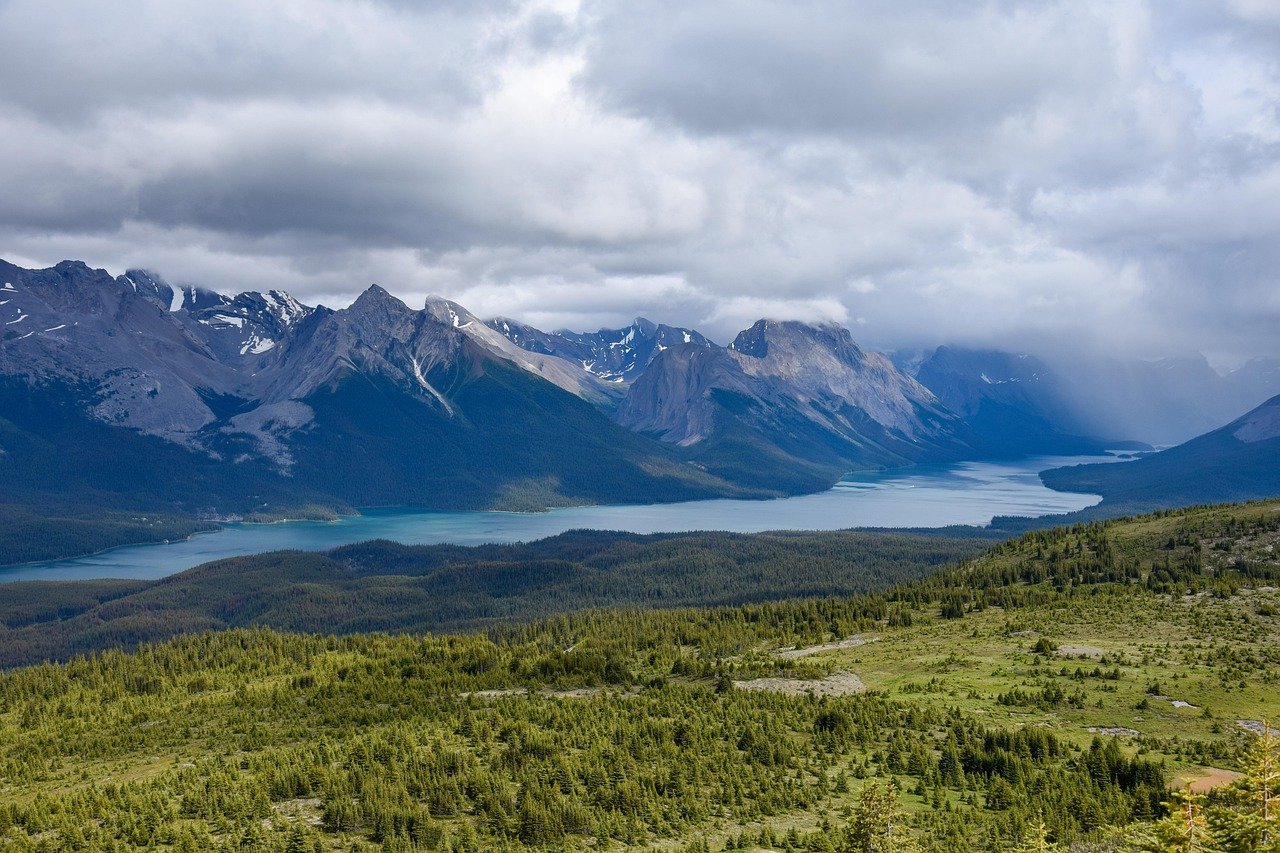
Accommodation Options for Every Budget
Luxury Lodges and Historic Hotels
The Canadian Rockies feature some of North America’s most spectacular luxury accommodations, many with histories dating back over a century. These properties offer unparalleled service and locations but command premium prices.
Fairmont Chateau Lake Louise stands as the region’s most iconic accommodation, offering direct lakefront access and world-class amenities. The hotel’s location provides exclusive access to lake activities and serves as the starting point for numerous hiking trails. Book well in advance, especially for summer visits.
Fairmont Banff Springs, known as the “Castle in the Rockies,” combines historic elegance with modern luxury. The property features multiple restaurants, a world-class spa, and golf course alongside spectacular mountain views. Winter packages often provide better value than peak summer rates.
Post Hotel & Spa in Lake Louise offers intimate luxury with exceptional dining and spa services. This smaller property provides more personalized service and often has better availability than the larger Fairmont properties.
Mid-Range and Budget-Friendly Options
Numerous mid-range accommodations provide comfortable stays without luxury price tags. These properties often offer better value and more authentic local experiences than their high-end counterparts.
Canmore, located just outside Banff National Park, offers significantly lower accommodation costs while maintaining easy park access. The town features numerous hotels, vacation rentals, and restaurants at more reasonable prices than Banff townsite.
Hostelling International operates several properties throughout the region, providing budget-conscious travelers with clean, safe accommodation. These hostels offer dormitory and private room options, along with communal kitchens for self-catering.
Camping represents the most budget-friendly accommodation option while providing the most immersive natural experience. Both Banff and Jasper national parks operate numerous campgrounds, from basic tent sites to RV-friendly locations with full hookups.
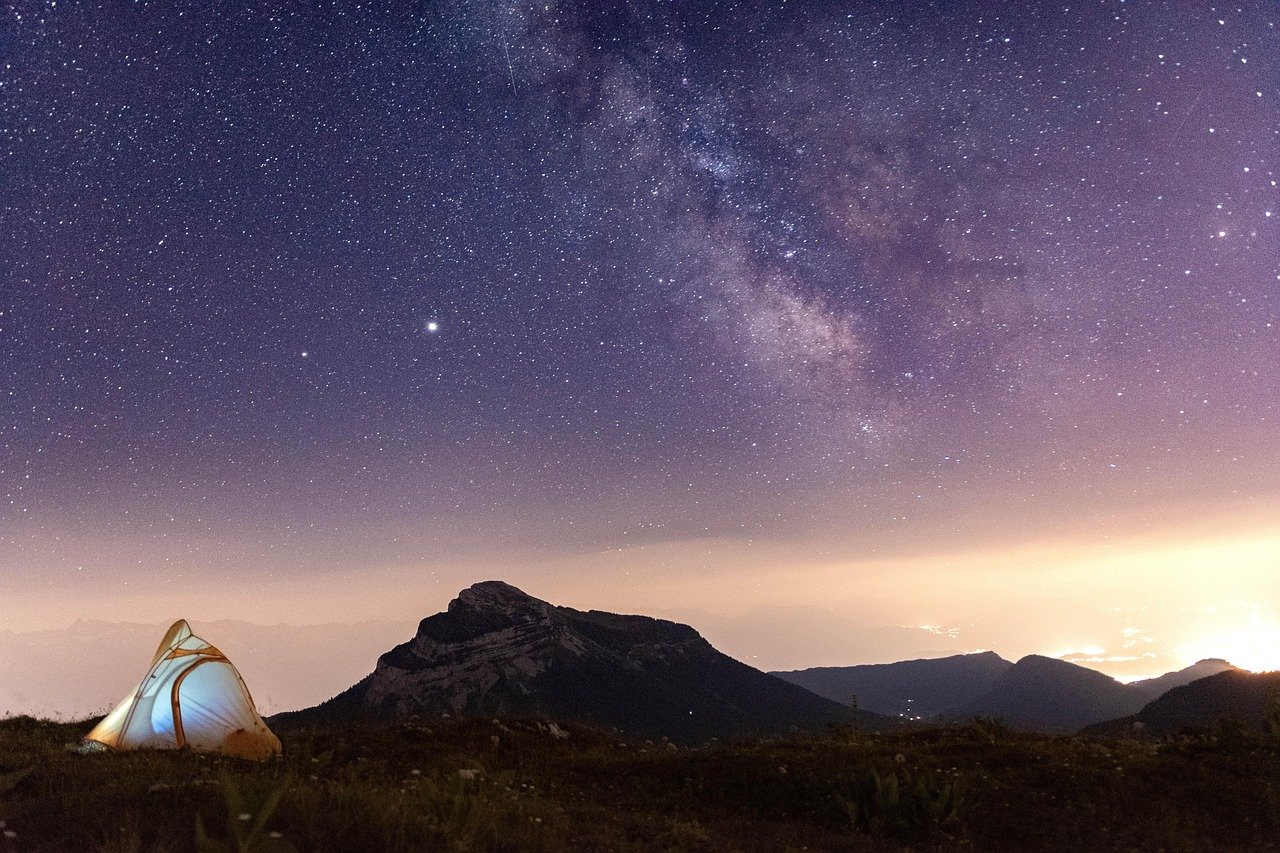
For booking accommodations, platforms like Vrbo offer vacation rental options that work well for families or groups, while Hotellook provides comprehensive hotel comparisons with competitive rates and loyalty programs.
Transportation and Getting Around
Driving in the Canadian Rockies
Driving remains the most practical way to explore the Canadian Rockies, providing flexibility and access to remote areas impossible to reach otherwise. However, mountain driving requires additional preparation and awareness.
Winter driving demands extra caution and preparation. All-season or winter tires are legally required between October and April, while carrying emergency supplies becomes essential. Snow can fall year-round at higher elevations, so always check weather conditions before departing.
Wildlife poses constant road hazards, particularly during dawn and dusk hours. Reduce speeds in wildlife corridors and remain alert for animals on or near roadways. Collisions with large animals like elk or moose can be fatal for both animals and vehicle occupants.
Fuel availability becomes important consideration for longer drives. Fill up whenever possible, as gas stations are widely spaced throughout the mountain regions. Keep emergency supplies including food, water, and warm clothing in your vehicle.
Alternative Transportation Methods
While driving provides the most flexibility, alternative transportation options exist for those preferring not to rent vehicles or wanting to reduce their environmental impact.
Brewster Express offers scheduled coach service between Calgary Airport and major Rocky Mountain destinations. The service includes stops at Lake Louise, Banff, and Jasper, with connecting services to Vancouver. This option works well for visitors planning to stay in one location.
Many hotels and lodges provide shuttle services to popular attractions and trailheads. These services often require advance booking and may charge fees, but they eliminate parking hassles at busy destinations.
Guided tour companies offer day trips and multi-day packages covering major highlights. While more expensive than independent travel, these tours provide expert commentary and handle all logistics. Companies like Get Your Guide and Viator offer various tour options with convenient online booking.
Essential Packing Guide for Rocky Mountain Adventures
Clothing for Variable Conditions
Mountain weather changes rapidly, making layered clothing systems essential regardless of season. Temperatures can vary dramatically between valley floors and high alpine areas, sometimes differing by 20°C or more.
Base layers should wick moisture away from skin while providing insulation. Merino wool and synthetic materials work best, while cotton should be avoided in mountain environments. Pack multiple base layer options for extended trips.
Insulating layers trap warm air while allowing moisture transfer. Fleece jackets, down vests, and synthetic insulation provide various options depending on conditions and activity levels. Choose pieces that compress well for easier packing.
Outer shells protect against wind and precipitation while allowing perspiration to escape. Waterproof/breathable fabrics work best for active pursuits, while simple rain gear suffices for casual activities.
Essential Gear and Safety Equipment
Bear spray is mandatory equipment for hiking in the Canadian Rockies. These specialized pepper sprays provide effective deterrence against aggressive bears when used properly. Practice deployment techniques before hitting the trails.
Navigation tools remain important even on well-marked trails. GPS devices, smartphone apps, and traditional map and compass provide backup navigation options if you become disoriented or weather deteriorates.
First aid supplies should match your intended activities and group size. Basic supplies suffice for short day hikes, while backcountry adventures require more comprehensive medical kits including emergency shelter and signaling devices.
Headlamps and extra batteries ensure safe travel during early morning starts or unexpected delays. Even day hikers should carry lights, as mountain weather can change rapidly and reduce visibility quickly.
Photography Equipment and Tips
The Canadian Rockies provide endless photography opportunities, from grand landscapes to intimate wildlife portraits. Proper equipment and techniques help capture these incredible moments effectively.
Wide-angle lenses excel for landscape photography, capturing the scale and grandeur of mountain scenery. A polarizing filter reduces reflections on water surfaces while enhancing sky contrast and color saturation.
Telephoto lenses enable safe wildlife photography while maintaining respectful distances from animals. These lenses also work well for isolating distant mountain peaks and creating compressed landscape compositions.
Tripods become essential for sharp landscape images, particularly during golden hour lighting when slower shutter speeds are necessary. Carbon fiber models provide stability while minimizing weight for hiking.
How to Plan Your Perfect Canadian Rockies Itinerary
7-Day First-Time Visitor Itinerary
Day 1: Arrive in Calgary, pick up rental car, drive to Banff (1.5 hours). Check into accommodation and explore Banff townsite. Take the Banff Gondola for orientation views of the area.
Day 2: Visit Lake Louise early morning for optimal lighting and fewer crowds. Hike to Lake Agnes Tea House (moderate, 3.5 km one way) or simply enjoy the shoreline walk. Afternoon at Moraine Lake if accessible.
Day 3: Drive the Icefields Parkway to Jasper (3-4 hours with stops). Stop at Bow Lake, Peyto Lake viewpoint, and Columbia Icefield. Evening arrival in Jasper townsite.
Day 4: Explore Jasper area with visits to Maligne Lake and boat tour to Spirit Island. Take Jasper SkyTram for panoramic mountain views. Easy evening walk around town.
Day 5: Drive back toward Banff via different route through Icefields Parkway. Stop at Athabasca Falls and any missed viewpoints from Day 3. Overnight in Banff area.
Day 6: Day trip to Johnston Canyon for waterfall walks. Afternoon in Banff for shopping, hot springs, or additional short hikes. Farewell dinner at a local restaurant.
Day 7: Return to Calgary for departure, allowing 2-3 hours for travel and car return. Consider stops in Canmore or Kananaskis if time permits.
Extended Adventure Options
For visitors with more time, extending stays allows for deeper exploration and more challenging activities. Two weeks provides opportunity for backcountry hiking, additional wildlife viewing, and side trips to lesser-known areas.
Consider adding Yoho National Park in British Columbia, home to stunning waterfalls and the famous Burgess Shale fossils. The park connects easily with Banff and offers excellent hiking without summer crowds of more famous destinations.
Kananaskis Country provides excellent hiking and outdoor activities just outside Banff’s borders. This provincial park system offers similar scenery with fewer restrictions and often better wildlife viewing opportunities.
Waterton Lakes National Park in southern Alberta offers prairie-meets-mountains scenery found nowhere else in the Rockies. The park connects with Glacier National Park in Montana for international hiking opportunities.
Seasonal Activity Planning
Spring visits (April-May) focus on lower elevation activities as high alpine areas remain snow-covered. This season offers excellent wildlife viewing as animals emerge from winter, but weather can be unpredictable.
Summer planning (June-August) allows access to all areas and activities but requires advance booking for popular attractions and accommodations. Focus on early morning starts to avoid crowds at major destinations.
Fall adventures (September-October) provide spectacular autumn colors with comfortable hiking weather. This season offers excellent photography opportunities but requires flexibility as weather becomes more variable.
Winter experiences (November-March) require different planning approaches focused on snow-based activities. Many high-elevation areas become inaccessible, but ice walks and winter wildlife viewing provide unique opportunities.
Safety Considerations and Emergency Preparedness
Wildlife Safety in Bear Country
The Canadian Rockies support healthy populations of both black bears and grizzly bears, requiring visitors to understand and practice proper bear safety techniques. Most bear encounters end peacefully when humans respond appropriately.
Make noise while hiking to avoid surprising bears. Talk, clap, or use bear bells, especially near streams, dense vegetation, or blind corners where bears might not hear your approach. Many bear encounters result from surprising animals.
Store food properly both in vehicles and while camping. Use bear-proof containers or hang food at least 4 meters high and 3 meters from tree trunks. Never leave food, toiletries, or scented items in tents.
If you encounter a bear, remain calm and avoid direct eye contact. Back away slowly while speaking in calm, low tones. Make yourself appear large by raising your arms or jacket above your head. Never run, as this may trigger a chase response.
Mountain Weather Awareness
Mountain weather changes rapidly and can become dangerous without warning. Always check current forecasts and be prepared to alter plans based on conditions. Weather at valley elevations often differs dramatically from high alpine areas.
Afternoon thunderstorms are common during summer months, particularly at higher elevations. Plan alpine activities for morning hours and have escape routes identified before storms develop. Lightning poses serious risks on exposed ridges and peaks.
Hypothermia can occur even during summer months when temperatures drop and clothing becomes wet. Recognize early symptoms including uncontrollable shivering, confusion, and loss of coordination. Prevention through proper clothing and preparation is essential.
Altitude affects many visitors, particularly those coming from sea level locations. Symptoms include headaches, nausea, and fatigue. Ascend gradually when possible and descend if symptoms worsen. Stay hydrated and avoid alcohol during acclimatization.
Emergency Communication and Evacuation
Cell phone coverage varies throughout the Canadian Rockies, with reliable service in major towns but spotty coverage in remote areas. Don’t rely solely on mobile phones for emergency communication.
Satellite communication devices provide reliable emergency contact capabilities regardless of location. Personal locator beacons (PLBs) and satellite messengers can summon help when other communication methods fail.
Leave detailed trip plans with reliable contacts including intended routes, destinations, and expected return times. Check in regularly and have predetermined procedures if you fail to return as scheduled.
Understand evacuation procedures and costs before departing. Helicopter evacuations can cost thousands of dollars and may not be covered by standard travel insurance. Consider specialized evacuation coverage for backcountry activities.
Cultural Experiences and Local Insights
Indigenous Heritage and History
The Canadian Rockies represent traditional territories of several Indigenous nations, including the Stoney Nakoda, Blackfoot, and Cree peoples. Understanding this rich cultural heritage adds depth to any Rocky Mountain experience.
The Buffalo Nations Luxton Museum in Banff showcases Indigenous culture and history of the region. Exhibits feature traditional clothing, tools, and artwork while explaining the relationship between Indigenous peoples and the mountain environment.
Guided cultural tours provide authentic insights into traditional land use and spiritual connections to the landscape. These experiences offer perspectives on the mountains that go far beyond simple sightseeing.
Consider purchasing authentic Indigenous artwork and crafts as meaningful souvenirs that support local artists and communities. Look for pieces that come with artist information and cultural context.
Modern Mountain Culture
The Canadian Rockies have developed their own unique mountain culture blending outdoor adventure with sophisticated amenities. This culture celebrates both achievement and conservation while welcoming visitors from around the world.
Local festivals and events provide windows into mountain community life. The Banff Mountain Film and Book Festival celebrates adventure culture through films and literature. Summer music festivals take advantage of spectacular outdoor venues.
Craft breweries and distilleries have flourished throughout the region, often incorporating local ingredients like glacial water and foraged plants. These establishments offer great places to meet locals and fellow travelers while sampling regional flavors.
Mountain guiding and outdoor education represent important local industries beyond tourism. Many residents work as professional guides, sharing their expertise and passion for the mountains with visitors while maintaining strong conservation ethics.
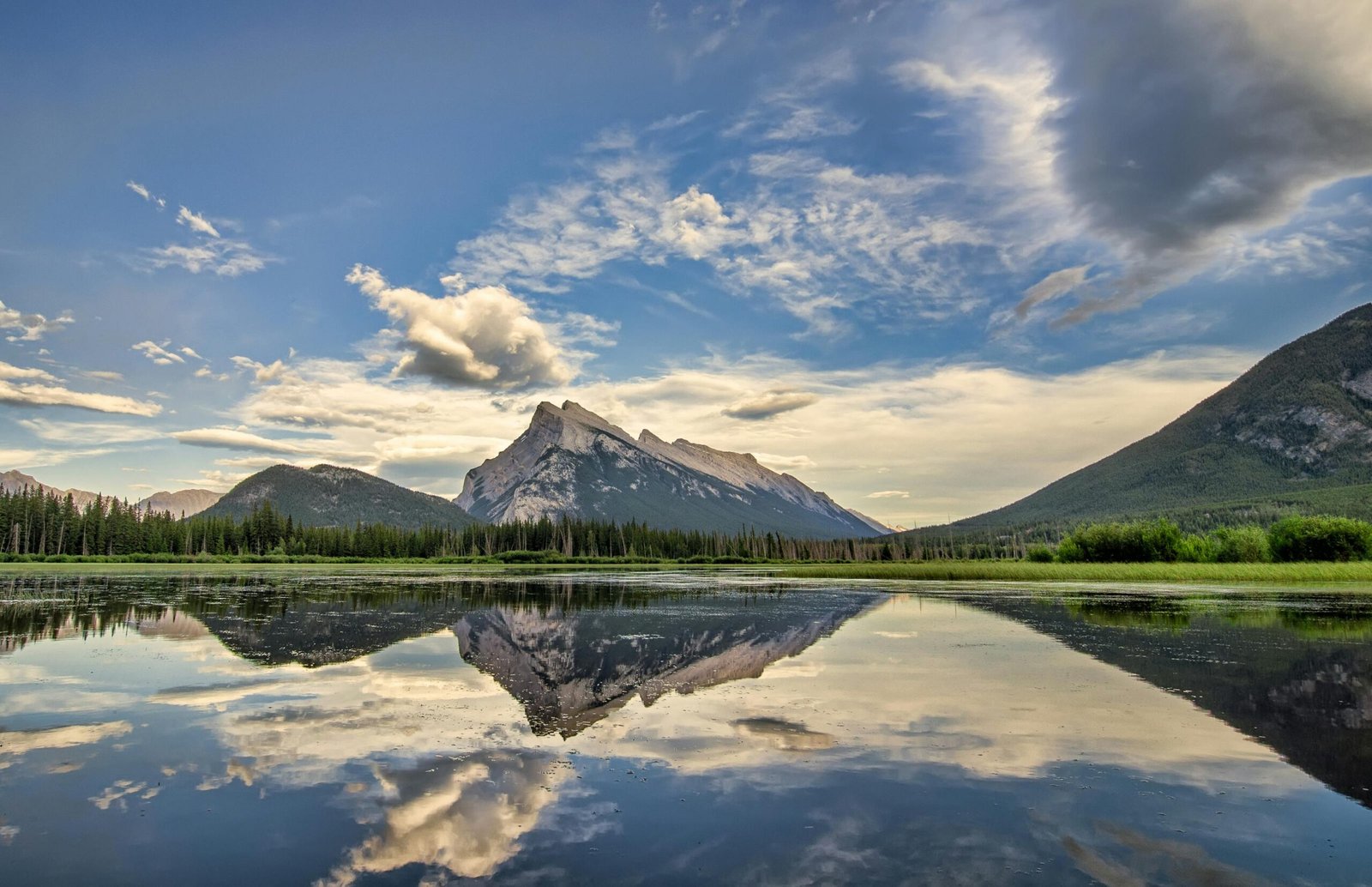
Sustainable Travel and Conservation
Minimizing Environmental Impact
The Canadian Rockies face increasing pressure from growing visitation numbers. Responsible travel practices help preserve these incredible landscapes for future generations while maintaining the quality of current experiences.
Follow Leave No Trace principles throughout your visit. Pack out all trash, stay on designated trails, and camp only in permitted areas. Small actions multiplied by millions of visitors create significant environmental impacts.
Choose accommodations and tour operators committed to sustainable practices. Look for properties with environmental certifications and companies that actively contribute to conservation efforts.
Use public transportation or shared tours when possible to reduce vehicle emissions and parking pressure at popular destinations. Consider offsetting unavoidable carbon emissions through verified programs.
Supporting Local Conservation
National park fees directly support conservation and maintenance of the incredible landscapes you’re visiting. Consider purchasing annual passes even for shorter visits to provide additional funding for park programs.
Volunteer opportunities exist for visitors wanting to contribute directly to conservation efforts. Programs include trail maintenance, wildlife monitoring, and visitor education activities.
Support businesses that contribute to local conservation efforts through donations, sustainable practices, or community involvement. Your tourism dollars can help fund important environmental protection work.
Practice wildlife viewing ethics by maintaining safe distances, never feeding animals, and reporting unusual animal behavior to park authorities. Responsible wildlife viewing helps maintain natural behaviors and reduces human-wildlife conflicts.
Technology and Apps for Rocky Mountain Adventures
Essential Apps and Digital Tools
AllTrails provides comprehensive trail information including maps, elevation profiles, and user reviews. Download offline maps before heading into areas with limited cell coverage. The app helps find trails matching your fitness level and interests.
Parks Canada app offers official information about national parks including current conditions, alerts, and interpretive content. The app works offline and provides valuable real-time updates about park operations.
Weather apps like Environment Canada provide detailed mountain forecasts essential for activity planning. Mountain weather differs significantly from valley forecasts, so use specialized mountain weather services when available.
iOverlander helps locate services like gas stations, camping, and grocery stores throughout your journey. This crowdsourced app works well for remote areas where services may be limited.
Photography and Social Media
Instagram and other social platforms showcase incredible Canadian Rockies photography, but also contribute to overcrowding at photogenic locations. Consider visiting popular spots during off-peak hours or exploring lesser-known alternatives.
Photography apps like PhotoPills help plan landscape shots by predicting sunrise, sunset, and moon positions. These tools help optimize lighting for specific locations and compositions.
Respect photography ethics by not disturbing wildlife or damaging vegetation for better shots. Popular photo locations often show signs of environmental damage from photographers seeking the perfect angle.
Share your experiences responsibly by avoiding specific location details for sensitive or fragile areas. Consider promoting Leave No Trace principles along with your photos to educate followers about responsible travel.
Food and Dining in the Canadian Rockies
Local Cuisine and Specialties
Canadian Rocky Mountain cuisine emphasizes local ingredients including wild game, fresh fish, and foraged plants. Many restaurants source ingredients locally while incorporating Indigenous and immigrant influences.
Bison appears on many menus throughout the region, representing both local heritage and sustainable protein sources. Try bison burgers, steaks, or traditional preparations for authentic regional flavors.
Alberta beef ranks among the world’s best, benefiting from clean mountain water and pristine grazing lands. Local steakhouses serve exceptional cuts showcasing regional agricultural excellence.
Wild game including elk, venison, and caribou appears seasonally on restaurant menus. These lean proteins connect diners with the wild landscape surrounding them.
Dining Options for Every Budget
Fine dining establishments in Banff and Jasper rival restaurants in major cities while offering unique mountain settings. These restaurants often require reservations well in advance, particularly during peak season.
Casual dining options provide excellent value with hearty portions suitable for active travelers. Many restaurants cater specifically to outdoor enthusiasts with early opening hours and grab-and-go options.
Grocery stores in mountain towns stock quality ingredients for self-catering, though prices reflect the remote location and transportation costs. Stock up in Calgary before entering the mountains for better selection and prices.
Food trucks and casual vendors appear seasonally in high-traffic areas, offering quick meals between activities. These options work well for families or budget-conscious travelers seeking convenient dining.
Shopping and Souvenirs
Authentic Local Products
Outdoor gear stores throughout the region offer high-quality equipment from leading brands alongside local expertise. Staff members often provide valuable advice about local conditions and appropriate gear selections.
Indigenous artwork including paintings, sculptures, and traditional crafts provides meaningful souvenirs supporting local artists. Look for authentic pieces with artist information and cultural context rather than mass-produced items.
Local food products like honey, preserves, and specialty foods make excellent gifts while supporting regional producers. Many items feature unique mountain ingredients unavailable elsewhere.
Photography prints and books by local artists capture the beauty of the Canadian Rockies in formats easily transported home. These items provide lasting memories while supporting local creative communities.
Where to Shop
Banff Avenue offers concentrated shopping with numerous outdoor retailers, souvenir shops, and galleries. The pedestrian-friendly street provides easy browsing with mountain views as backdrop.
Local markets and craft fairs occur seasonally throughout the region, offering direct contact with artisans and producers. These events often feature live music and local food alongside shopping opportunities.
Hotel gift shops often carry curated selections of local products, though at premium prices. These shops work well for last-minute purchases or when time is limited.
Online shopping from local retailers allows you to purchase items after returning home, extending your connection to the region while supporting local businesses.
Frequently Asked Questions
What’s the best time of year to visit the Canadian Rockies?
The ideal time depends on your interests and activities. Summer (June-August) offers the warmest weather and best hiking conditions but also brings crowds and higher prices. Winter (December-March) provides snow sports and fewer tourists but requires cold weather preparation. Spring and fall offer excellent value with moderate weather and fewer crowds, though some high-elevation activities may be limited.
Do I need a car to explore the Canadian Rockies?
While public transportation exists, a rental car provides the best flexibility and access to remote areas. Many of the region’s most spectacular viewpoints and trailheads require driving to reach. Bus services connect major towns, but schedules limit spontaneous exploration that makes the Rockies special.
How much should I budget for a week in the Canadian Rockies?
Costs vary dramatically based on accommodation choices and activities. Budget travelers can manage with $100-150 CAD per day including hostels, camping, and self-catering. Mid-range travelers should budget $200-300 CAD daily for hotels and restaurant meals. Luxury experiences start around $500 CAD per day. Remember that mountain destinations typically cost more than urban areas.
What’s the likelihood of seeing wildlife?
Wildlife viewing opportunities are excellent throughout the Canadian Rockies, but sightings aren’t guaranteed. Bears, elk, and mountain goats are commonly observed, especially during early morning and evening hours. Spring and fall provide the best viewing as animals are more active. Always maintain safe distances and carry bear spray when hiking.
Can I visit both Banff and Jasper in one trip?
Absolutely! The Icefields Parkway connects both parks via one of the world’s most scenic drives. Allow at least 3-4 days minimum to see highlights of both parks, though a week or more allows for a more relaxed pace and deeper exploration. Many visitors base themselves in one park and take day trips to the other.
Ready to experience the Canadian Rockies? Start planning your adventure today with comprehensive travel insurance from VisitorsCoverage, find the perfect accommodation through Hotellook, and book unforgettable activities with Get Your Guide. For international travelers, stay connected with Airalo eSIM cards ensuring reliable communication throughout your mountain adventure. Compare flight options on Aviasales and secure your rental car through Getrentacar for the ultimate Canadian Rockies experience.




